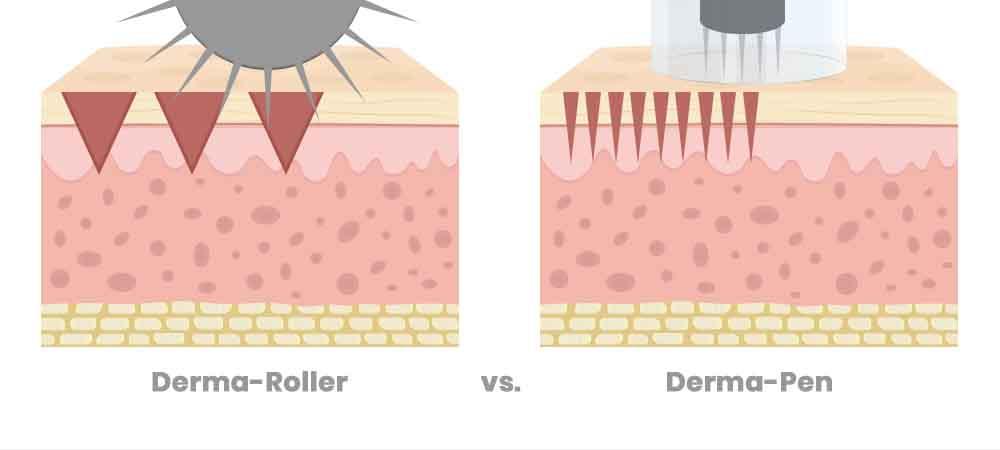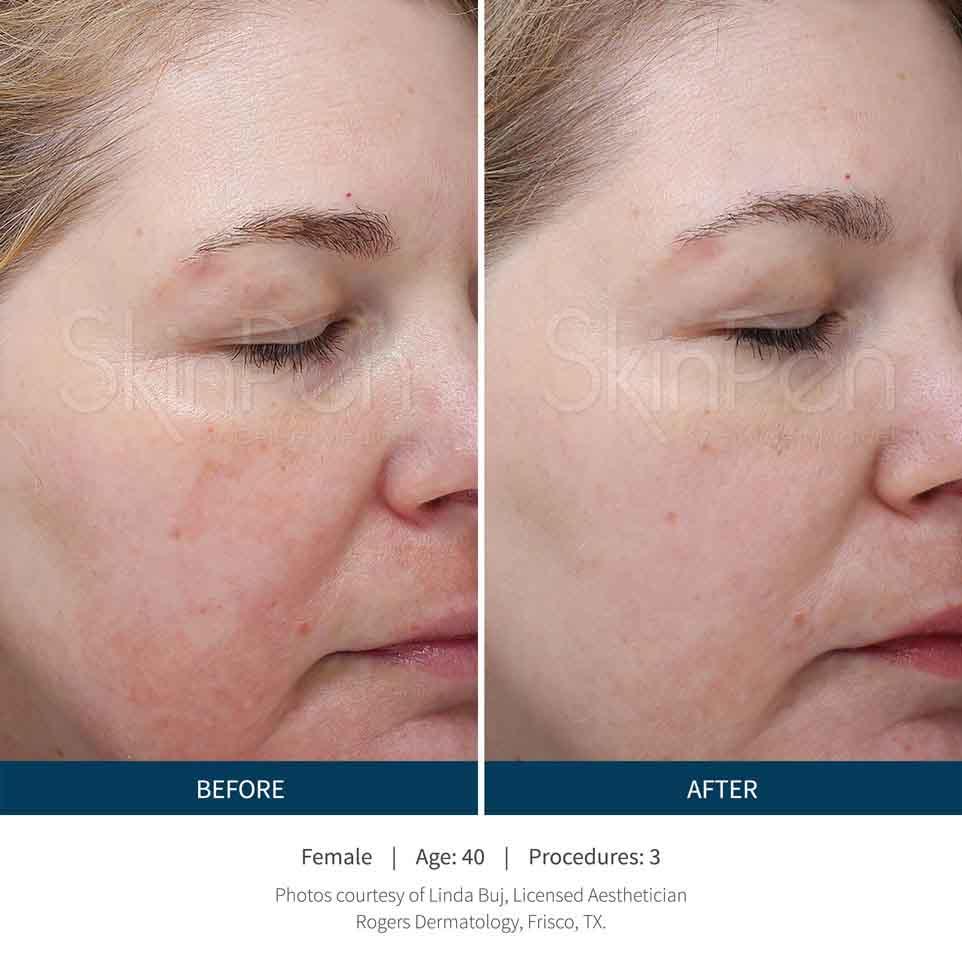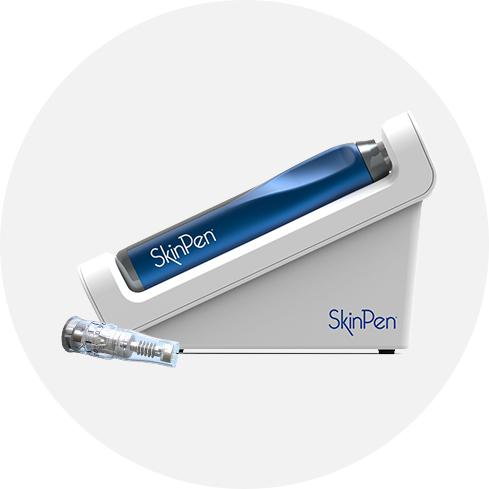Is microneedling better than lasering?
Lasers use a directed pulse of high-energy light, allowing for a very targeted treatment. In applications where laser treatments are appropriate, desired results can often be seen with a single treatment. In addition, lasers can more effective than microneedling at treating certain conditions, such as broken veins. However, laser treatments have longer recovery times, carry more risk of complications and are not always appropriate for all skin types.
On the other hand, microneedling is a broad treatment technique. Recovery times from microneedling sessions are quicker than those with lasers, but the results from each individual session are subtler. While recovery time from microneedling sessions is minimal, it can take more sessions to achieve the same results as a single session with a laser. However, microneedling can be used to treat a much larger area. Microneedling is also safer for a wider variety of skin types and may have more appeal to those looking for a more natural treatment. It is ideal for treating acne, acne scarring, and fine lines.
There is not one correct answer whether microneedling or lasering is better. As with any medical treatment, your decisions should be made after speaking with a medical provider who can provide you with information on available courses of treatment so you can make an informed decision on which is best for you.
Additionally, other forms of microneedling, such as RF microneedling penetrate deeper into the skin like a laser would, without the added damage. This is a great option for patients unable to undergo a traditional laser procedure.
What happens during the procedure? Does Microneedling hurt?
During a treatment session, you will be taken to a private treatment room in our office, where your skin will be thoroughly cleaned and sterilized. A numbing cream will be applied at the treatment site for your comfort during the procedure. As the numbing cream begins to work, your provider will seal the microneedling device in a sterile wrap and insert a fresh set of sterile needles into the device.
Your Seattle microneedling provider will then begin your treatment by setting the microneedle depth to a setting appropriate for your needs and gently massaging the device across the surface of your skin. The majority of patients report only a slight vibration sensation during this time.
Once the appropriate area is treated, your provider will once again wash and sterilize the area and apply a soothing gel to the surface of your skin to nourish it and prevent drying.
What is the recovery and downtime?
After treatment, you should avoid direct exposure to sunlight and refrain from harsh cleaners for a week. A small percentage of patients may experience what can be described as a mild sunburn sensation, though this should subside after two to three days. As your body naturally generates new collagen, you can expect to see a reduction in the appearance of scars, a lessening of wrinkles and a more youthful appearance overall.
Why Choose a Seattle Plastic Surgeon for Microneedling
You may have seen or heard about do it yourself microneedling. While they may seem like a good way to save money, microneedling, as well as microdermabrasion at home, are bad ideas.
Consumer products are designed for repeated use at home. Though the holes created in microneedling are nearly microscopic, they are still intrusions into your body through its outer layer of defense, the skin. Even when washed well, these do it yourself products are still not sterile. Every hole through your skin is a potential entry point for dirt and bacteria.
Consumer products can increase, rather than reduce, scarring.
Most do it yourself microneedling products–such as microneedling rollers–are wheels lined with hundreds of tiny needles. When rolled across the user’s skin, these consumer products enter at an angle and leave at an opposing angle. The punctures made by these rollers are “V” shaped, rather that “I” shaped. Larger punctures are no more effective at best, dangerous at worst, and can cause scarring from excessive puncture sizes (see below).

Is microneedling safe?
In addition to the risks of infection and scarring, consumer microneedling products are less effective. Deeper scarring requires deeper needle depths for effective treatment. The Food & Drug Administration (FDA) regulates needle depths on microneedling devices, classifying those with longer needle depths as medical devices only to be used under the guidance of a physician. Consumer products cannot reach the depths required to treat some scars.




